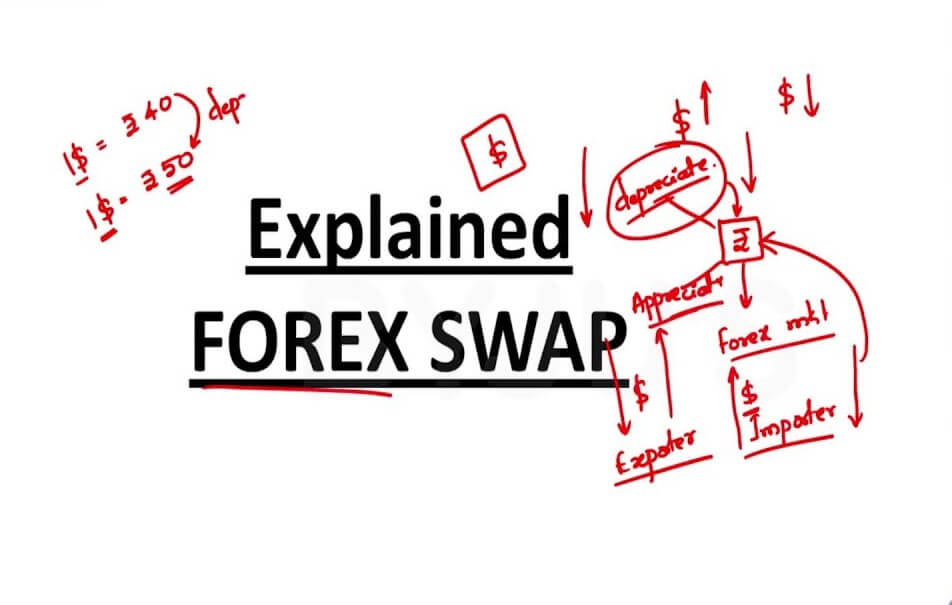In the realm of currency trading, the concept of forex swaps often ignites curiosity and confusion alike. Let’s embark on an educational journey to unravel the intricacies of these financial instruments and empower you with a comprehensive understanding of their purpose, mechanics, and impact in the global market.

Image: www.forex.academy
What Lies at the Heart of Forex Swaps?
A forex swap, formally known as a currency swap, is a financial agreement between two parties to exchange a specific amount of currency at an agreed-upon exchange rate on a designated future date. This arrangement involves the exchange of both the principal amount and the interest accrued on the underlying currencies. Essentially, forex swaps facilitate the exchange of cash flows in different currencies, catering to a wide range of financial objectives, from hedging against exchange rate fluctuations to speculative trading.
Navigating the Mechanics of Forex Swaps
The mechanics of a forex swap are relatively straightforward yet intricately designed. The swap transaction is typically conducted over-the-counter (OTC) between two parties, often large financial institutions or central banks. The parties agree on an exchange date, the currencies involved, the amount to be exchanged, and an exchange rate. On the agreed-upon date, the principal amounts and accrued interest are exchanged, resulting in the completion of the swap.
Unveiling the Multifaceted Roles of Forex Swaps
Far from being mere currency exchange tools, forex swaps play a multitude of roles in the global financial landscape:
-
Hedging Against Currency Fluctuations: Swaps provide an avenue for businesses and individuals to mitigate the financial risks associated with currency fluctuations. Importers and exporters can insulate themselves against adverse exchange rate movements by entering into forward contracts that fix the exchange rate for future transactions.
-
Facilitating International Investment: Swaps act as catalysts for international investments by allowing investors to access foreign markets without bearing the burden of exchange rate risk. They enable investors to diversify their portfolios and potentially enhance returns.
-
Speculation on Currency Movements: Forex swaps offer a platform for speculation on future currency movements. Traders can enter into long or short positions based on their outlook on a particular currency pair, potentially profiting from favorable exchange rate changes.
-
Monetary Policy Management: Central banks actively utilize swaps as part of their monetary policy toolkit. By adjusting the exchange rates and amounts involved in swaps, central banks can influence capital flows, curb inflation, and maintain economic stability.

Image: www.youtube.com
The Crossroads of Forex Swaps and Interest Rates
Forex swaps are inherently intertwined with interest rates, as they entail the exchange of both principal amounts and interest accrued on the underlying currencies. The interest rate differential between the two currencies plays a crucial role in determining the profitability of a swap. If the interest rate on the currency being received is higher than that on the currency being paid, the swap can generate a positive return for one of the parties, known as the “gain leg.” Conversely, if the interest rate on the currency being paid is higher, the swap will incur a negative return, referred to as the “loss leg.”
A Note on the Risks of Forex Swaps
While forex swaps offer a wide range of opportunities, they also entail inherent risks that must be carefully considered:
-
Currency Risk: As swaps involve exchanging one currency for another, the prevailing exchange rate fluctuations can impact their profitability. Unfavorable currency movements can lead to losses or diminished returns.
-
Interest Rate Risk: The interest rate differential between the exchanged currencies is a key determinant of a swap’s profitability. Shifts in interest rates can modify the gain or loss leg, potentially affecting the overall profitability of the swap.
-
Counterparty Risk: Forex swaps rely on the fulfillment of obligations by both parties. The creditworthiness and reputation of the counterparty should be thoroughly assessed to mitigate the risk of non-performance.
Empowering Yourself with Forex Swap Knowledge
To navigate the intricacies of forex swaps, consider embracing the following strategies:
-
Educational Resources: Delve into books, articles, and online courses that provide comprehensive insights into the mechanics, types, and applications of forex swaps.
-
Expert Advice: Seek guidance from reputable financial advisors or currency traders who possess a thorough understanding of forex swaps and market dynamics.
-
Market Analysis: Monitor financial news, economic data, and market trends to stay abreast of the factors influencing currency movements and interest rates.
-
Risk Management: Implement robust risk management practices, including analyzing potential currency and interest rate fluctuations, diversifying investments, and setting stop-loss orders to minimize potential losses.
All You Wanted To Know About Forex Swaps
Conclusion: A World of Opportunities and Risks
Forex swaps offer a world of both opportunities and risks, serving as dynamic financial instruments that facilitate currency exchange, hedging, speculation, and international investment. By thoroughly comprehending the intricate details of forex swaps, empowering yourself with knowledge, and exercising sound risk management principles, you can harness their potential to navigate the global currency markets and achieve your financial aspirations.






